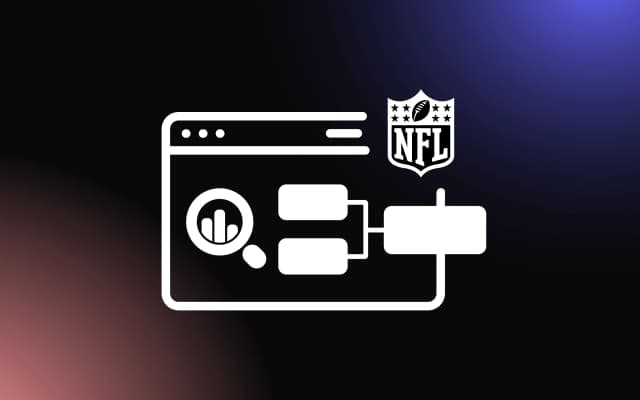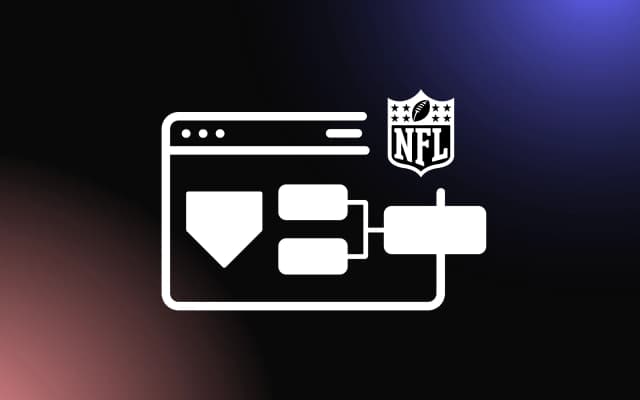
The thrill of competition, the anticipation of outcomes, and the joy of participation — voting bracket challenges have become a popular way to engage audiences and foster community involvement. Whether it's determining the best song of the decade, the favorite movie character, or the most delicious dessert, bracket challenges offer a unique blend of entertainment and competition.
However, organizing a successful voting bracket challenge involves more than just setting up polls. It requires strategic planning, effective promotion, and a keen understanding of your audience.
This article will guide you through the essential steps and best practices to ensure your bracket challenge is not only fun but also a resounding success.
Grasping the Concept of a Voting Bracket Challenge
What is a Voting Bracket Challenge?
A Voting Bracket Challenge is a competition format where participants or items are pitted against each other in a series of one-on-one matchups, with winners determined by popular vote rather than performance or skill. Much like a traditional tournament bracket, participants advance through successive rounds based on receiving the majority of votes in their matchup.
This format is often used in contexts where subjective preferences, rather than objective measures, determine the outcome. Examples include voting for favorite songs, movies, characters, or even food items.
Popularity and Appeal of Voting Brackets
The appeal of Voting Bracket Challenges lies in their interactive and engaging nature. They empower audiences to have a direct say in the outcome, fostering a sense of participation and investment. The simplicity of the voting process, often facilitated by digital platforms, allows for widespread participation, creating buzz and excitement.
Additionally, these challenges often spark debates and discussions among participants, as they advocate for their favorites and rally support. The anticipation of seeing how one's choices fare against the majority adds an element of suspense, making the process both fun and engaging.
Key Differences from Traditional Tournament Brackets
While both Voting Bracket Challenges and traditional tournament brackets involve a progression through rounds based on head-to-head matchups, the criteria for advancement differ significantly. In traditional brackets, participants advance based on performance, skill, or achievement. In contrast, Voting Brackets rely on popular opinion.
This means that outcomes can be influenced by factors like current trends, marketing campaigns, or even social media virality. Additionally, while traditional tournaments often involve direct competition between participants, Voting Brackets are more passive, with the "contestants" (be they songs, movies, etc.) not actively competing but rather being evaluated by the audience.
Choosing a Theme or Topic
Popular Culture Themes (Movies, Songs, Celebrities)
Selecting a theme rooted in popular culture is a surefire way to capture attention and engage a broad audience. Movies, songs, and celebrities already have established fan bases, making them ideal subjects for voting brackets.
Whether it's a showdown between classic films, chart-topping hits, or beloved actors, these themes resonate with many, sparking nostalgia and passionate debates. Moreover, popular culture brackets can be tailored to specific eras, genres, or even events, allowing organizers to cater to niche audiences or capitalize on current trends.
Sports and Athletic Events
Sports themes are a staple in the world of voting brackets, given the competitive nature of athletics. Whether it's determining the greatest athlete of all time, the most memorable sports moment, or the best team in a particular league, sports-themed brackets tap into the fervor of dedicated fans.
These brackets can be timely, focusing on current seasons or tournaments, or they can be retrospective, looking back at historical achievements. The inherent drama and rivalry in sports make these brackets especially engaging, as fans rally behind their favorites and relive iconic moments.
Local or Community-based Topics
For a more personalized touch, local or community-based themes offer a unique spin on the voting bracket format. This could involve voting on the best local restaurant, park, or landmark. Alternatively, it could focus on community events, local heroes, or even neighborhood debates (like the best spot for a picnic).
These themes foster a sense of community pride and engagement, as participants support local entities and celebrate the unique aspects of their community. Additionally, local brackets can be a great way to highlight lesser-known spots or individuals, giving them a platform and recognition.
Designing the Bracket Structure
Deciding on the Number of Entries
The foundation of any voting bracket challenge lies in determining the number of entries. This decision often hinges on the theme and the intended scale of the competition. Common bracket sizes include 8, 16, 32, or 64 entries, with each size offering its own advantages. A smaller bracket, like an 8-entry competition, allows for a quick and concise challenge, ideal for shorter campaigns or events.
In contrast, a 64-entry bracket provides a comprehensive and extended experience, suitable for larger themes or when aiming for prolonged engagement. The key is to ensure that the number of entries aligns with the depth and breadth of the chosen theme, ensuring variety without overwhelming participants.
Seeding and Arranging Match-ups
Once the number of entries is determined, the next step is seeding. Seeding involves ranking entries based on predetermined criteria, such as popularity, historical significance, or any other relevant metric. This ranking ensures that the most favored or strongest entries don't face off in the initial rounds, allowing for more suspenseful and engaging match-ups in the later stages.
Proper seeding is crucial in maintaining participant interest, as it sets the stage for potential upsets and riveting contests. After seeding, entries are arranged in the bracket, with higher seeds typically facing lower seeds in the opening rounds to maintain a balance of competition.
Single vs. Double Elimination Voting
The elimination format plays a pivotal role in the overall structure and flow of the bracket. In a single elimination format, entries are ousted from the competition after a single loss. This format is straightforward and creates high stakes for each match-up, as every vote is crucial for advancement.
On the other hand, a double-elimination format offers a second chance. Entries need to lose twice before being eliminated, introducing a "losers' bracket" where entries can fight their way back to the main competition. While this format is more complex and extends the duration of the challenge, it adds layers of strategy and intrigue, as entries have the opportunity for redemption.
The Best Tool for Creating Voting Brackets

Common Ninja offers an exceptional tool for creating voting brackets: the Bracket Maker widget. This online widget is designed to amplify user engagement by transforming every tournament into a personalized experience. Users can vote for participants, make predictions, and even have a personal stake in the event.
The Brackets Generator enhances the user experience by allowing the addition of prizes, creating visually appealing brackets, and fostering a sense of anticipation that encourages users to return and participate repeatedly.
For those looking to grow their email list, the Free Bracket Maker offers a signup option, ensuring secure and authentic user participation while collecting valuable leads. The tool supports various bracket types, including single elimination, double elimination, and custom brackets.
Furthermore, users can export their brackets as images or PDFs, ensuring easy sharing and accessibility. With multiple layout designs and customization options, the Free Bracket Maker by Common Ninja is the ultimate solution for anyone looking to integrate a voting bracket seamlessly into their website.
Promoting Participation and Engagement
Marketing and Promotion Strategies
Driving participation in a voting bracket challenge begins with effective marketing and promotion. Utilizing multiple channels can cast a wider net and attract a diverse audience. Social media campaigns, using platforms like Facebook, Instagram, and Twitter, can generate buzz and encourage sharing among users. Email newsletters targeting existing subscribers or members can provide detailed information and regular updates about the challenge.
Collaborations with influencers or popular figures in the relevant domain can also amplify reach and lend credibility to the event. Additionally, leveraging paid advertising, be it through search engines or sponsored social media posts, can target specific demographics and ensure the challenge reaches potential participants who might be genuinely interested.
Incentives and Prizes for Participants
One of the most effective ways to boost participation is by offering incentives. Prizes, whether monetary, physical goods, or experiences, can motivate individuals to not only participate but also remain engaged throughout the competition.
For instance, offering tickets to a related event, signed memorabilia, or exclusive access to content can be enticing. Tiered rewards, where participants can win smaller prizes in the initial rounds and grand prizes in the final stages, can maintain interest and engagement over time. Additionally, non-material incentives, like recognition on a leaderboard or shout-outs on social media, can also drive participation, especially when the community or social recognition aspect is strong.
Engaging Content and Updates
Keeping participants engaged requires more than just the initial allure of the challenge. Regular updates, behind-the-scenes content, and interactive elements can sustain interest. For instance, posting video recaps of each voting round, interviewing participants or experts about their choices, or creating shareable graphics can provide added value. Interactive elements, like live Q&A sessions, prediction contests, or discussion forums, can foster a sense of community and encourage participants to stay involved.
Moreover, timely and clear communication, especially when announcing winners or addressing any issues, ensures transparency and trust, further enhancing engagement.
Ensuring Fairness and Integrity
Rules and Guidelines for Voting
To maintain the credibility of a voting bracket challenge, it's imperative to have clear and concise rules and guidelines. Participants should be informed about the voting process, including how often they can vote, the duration of each voting round, and any criteria for eligibility.
Transparency in the voting process ensures that participants understand the expectations and can engage in the challenge without ambiguity. Additionally, any restrictions, such as geographic limitations or age requirements, should be communicated upfront to prevent any misunderstandings or disputes later on.
Preventing Vote Manipulation
One of the primary concerns in any voting-based challenge is the potential for vote manipulation. To combat this, organizers can implement measures such as CAPTCHA verification, IP address tracking, and requiring user registration or authentication before voting.
These measures can deter bots and automated voting scripts, ensuring that the votes cast are genuine. Additionally, monitoring voting patterns and being vigilant for any sudden spikes or anomalies can help detect and address any attempts at manipulation.
In cases where vote manipulation is suspected, organizers should be prepared to take corrective actions, which may include disqualifying votes or even participants, to preserve the integrity of the challenge.
Addressing Ties and Close Calls
Inevitably, there may be instances where voting results in a tie or an exceptionally close call. Organizers should have predefined protocols for such scenarios. This could involve extending the voting period for the specific match-up, introducing a tie-breaker round, or using predetermined criteria (like seed rankings or expert opinions) to decide the winner.
Whatever the approach, it's crucial that the method for resolving ties is fair, transparent, and communicated to participants in advance.
Analyzing Results and Feedback
Gathering Data and Insights
After the conclusion of a voting bracket challenge, the first step is to collate and analyze the data. This involves not just tallying the votes, but also examining patterns, participation rates, and any feedback received. Utilizing analytics tools can provide a deeper understanding of user behavior, such as the times when most votes were cast, the demographics of the participants, and the devices or platforms used.
This data is invaluable, as it offers a comprehensive view of how the challenge was received and highlights areas of interest or concern.
Understanding Audience Preferences
The results of the challenge can offer a wealth of information about audience preferences. Which entries garnered the most votes? Were there any surprise outcomes or dark horses that outperformed expectations? Analyzing the results can reveal trends, preferences, and even shifts in popular opinion.
For instance, if a lesser-known movie outvotes a blockbuster in a film-themed bracket, it might indicate a growing niche audience or changing tastes. Such insights can be invaluable for marketers, event organizers, or anyone keen on understanding their audience better.
Improvements for Future Challenges
Feedback, both positive and negative, is a goldmine for improvement. Participants might offer suggestions on the voting process, the user interface, or even the themes chosen for the challenge. It's essential to have a system in place to gather this feedback, whether through surveys, comment sections, or direct communication channels.
By understanding what worked and what didn't, organizers can make informed decisions for future challenges. This might involve tweaking the voting mechanism, improving the user experience, or choosing more engaging themes based on audience feedback.
Post-Challenge Activities
Celebrating Winners and Highlights
Once the voting bracket challenge concludes, it's essential to celebrate the winners and highlight memorable moments. This can be done through a dedicated announcement ceremony, a live stream, or even a simple post on social media platforms.
Showcasing the journey of the winner, from the initial stages to the final victory, can add a narrative element that resonates with the audience. Additionally, creating a montage or recap of the most exciting, unexpected, or close match-ups can serve as a nostalgic look back and keep the enthusiasm alive even after the challenge ends.
Engaging with the Community
The end of the challenge doesn't mean the end of engagement. It's an opportunity to further interact with the community, thanking them for their participation, and encouraging discussions.
Hosting Q&A sessions, feedback forums, or even post-challenge debriefs can provide participants with a platform to share their experiences, voice their opinions, and feel valued. Such interactions not only foster a sense of community but also provide organizers with invaluable insights for future events.
Planning for the Next Challenge
With one challenge wrapped up, it's the perfect time to start planning for the next. Using the data, feedback, and experiences from the concluded challenge, organizers can identify areas of improvement and new opportunities.
Perhaps there's a demand for a different theme, or maybe the voting mechanism needs tweaking. Early planning allows for ample time to address these aspects, ensuring the next challenge is even more successful. Moreover, teasing or announcing the next challenge shortly after the conclusion of the current one can maintain momentum and keep the audience engaged and excited.
Conclusion
Organizing a voting bracket challenge can be a rewarding experience, both for the organizer and the participants. When executed well, it can boost engagement, foster community spirit, and create memorable moments for everyone involved.
Remember, the key to a successful bracket challenge lies in its preparation, execution, and follow-up. By ensuring a fair voting process, promoting effectively, and celebrating the results, you can create a challenge that resonates with your audience and leaves them eagerly anticipating the next one. So, as you embark on this exciting journey, keep these strategies in mind and watch as your bracket challenge becomes the talk of the town!



